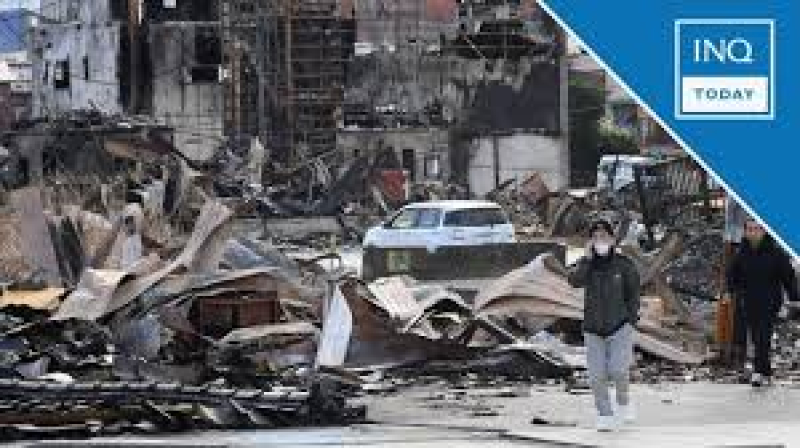- Dhaka’s air ‘unhealthy for sensitive groups’ Wednesday morning |
- US proposes that the UN authorize a Gaza stabilization force for 2 years |
- Democrat Zohran Mamdani is elected New York City mayor |
- Martyr Mugdha's brother Snigdha steps into politics with BNP |
- FAO Warns of ‘Silent Crisis’ as Land Loss Threatens Billions |
Japan quake death toll jumps to 161, 103 missing: authorities

The death toll from Japan's New Year's Day earthquake has jumped to 161 from 128 overnight, authorities said Monday as snow complicated rescue efforts.
The number of people unaccounted for fell to 103 from 195, according to authorities in the central Ishikawa region hit by the 7.5-magnitude quake.
The shock waves toppled buildings, sparked a major fire and triggered tsunami waves over a metre high.
Thousands of rescuers have been drafted in from all over Japan, their work complicated by roads being cut off by the quake and an estimated 1,000 landslides, reports BSS.
In the last two days, the region has been blanketed in snow, making the operation harder still.
Against the odds, a woman in her 90s survived five days under the wreckage of a collapsed house in the city of Suzu on the hard-hit Noto Peninsula before being saved on Saturday.
"Hang in there!" rescuers were heard calling to the woman, in police footage from the rainy scene published by local media.
"You're gonna be OK!" they shouted. "Stay positive!"
Not all were so lucky. In the town of Anamizu, a 52-year-old man who lost his 21-year-old son and his parents-in-law waited to hear news of his wife, his other three children and more family members.
"I want them to be alive. It's unthinkable that I could be left alone," he told NHK.
The colder weather is also likely to worsen conditions for more than 28,800 people in 404 government shelters.
Continuous rain has increased the risk of fresh landslides, while heavy snow could cause more buildings to collapse under its weight, the regional government warned.
At least 2,000 people in many communities on the remote peninsula have been cut off by damaged roads, with some of an estimated 1,000 landslides also blocking aid vehicles.
That means relief materials have been slow to reach areas suffering water and power outages.
Around 20,700 households in the wider Ishikawa region remained without electricity on Sunday. More than 66,100 households were without water.
"The first priority has been to rescue people under the rubble, and to reach isolated communities," Prime Minister Fumio Kishida said in an interview with NHK on Sunday.
The military has sent small groups of troops to each of the isolated communities on foot, he said.
The government has also "deployed various police and fire department helicopters" to reach them, Kishida added.
Japan experiences hundreds of earthquakes every year, though most cause no damage because of strict building codes in place for more than four decades.
But many structures are older, especially in rapidly ageing communities in rural areas like Noto.
The country is haunted by the monster quake of 2011 that triggered a tsunami, left around 18,500 people dead or missing and caused a nuclear catastrophe at the Fukushima plant.

